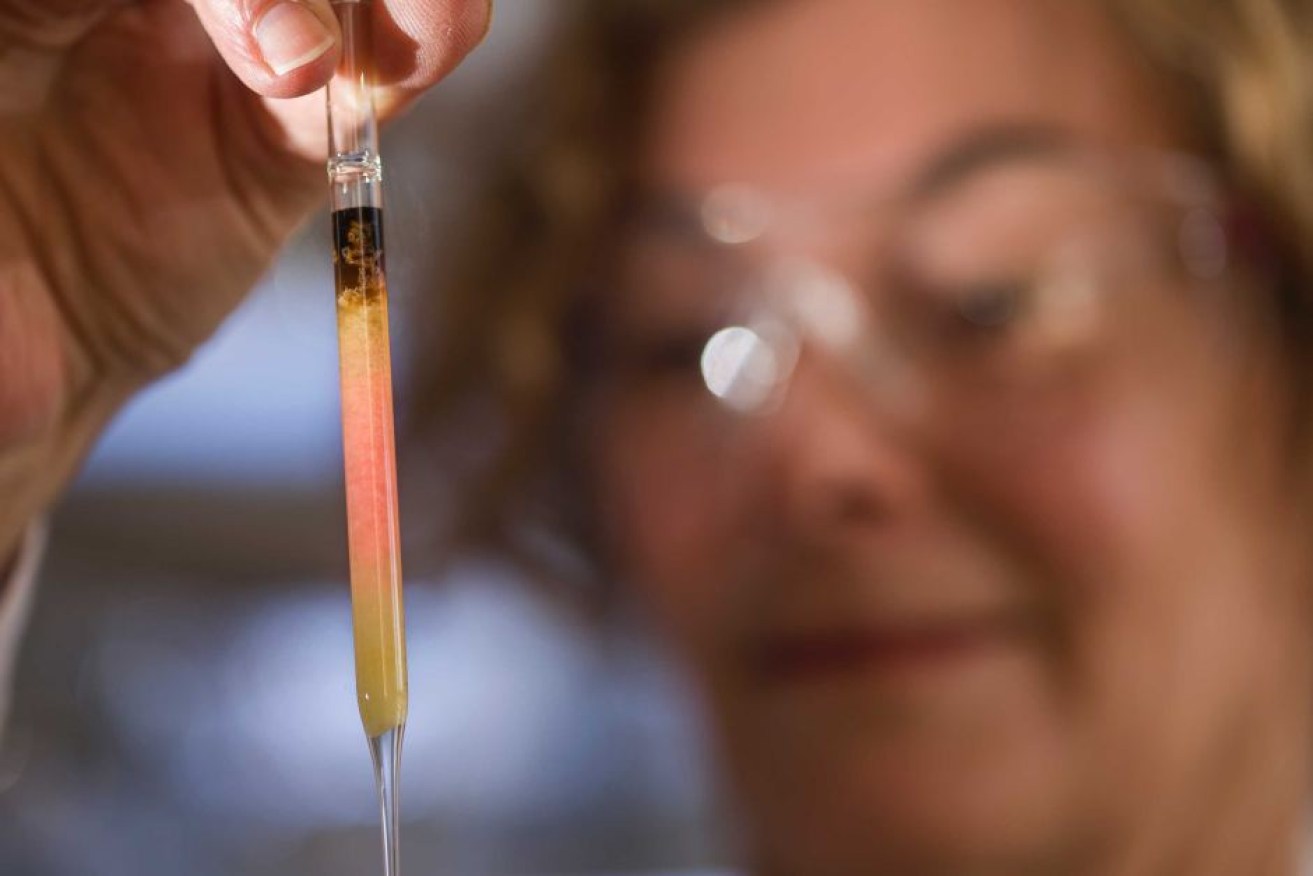Earth’s oldest biological colour discovered in Sahara Desert rocks

PHOTO: The molecular fossils were originally green and are bright pink when diluted. Photo: Supplied, ANU
The discovery of the world’s oldest biological colour could help explain why it took four billion years for animal life to form on Earth.
International research led by the Australian National University (ANU) has resulted in the discovery of a 1.1-billion-year-old colour – the oldest in geological record.
It is more than 500 million years older than previous pigment discoveries and was published today in the Proceedings of the National Academy of Sciences.
The molecular fossils were originally green, but range from blood red to deep purple in their concentrated form, and are bright pink when diluted.
They were extracted from rocks that were discovered buried deep beneath the Sahara Desert in Africa and were taken from marine black shales of the Taoudeni Basin in Mauritania.
The rocks were crushed in powder before extracting molecules from them with organic solvents to produce oil.
The oil they found was pink.
Everything has a colour and colours go back to the beginning of time.
What these researchers have found is the oldest physical colour – a biological pigment. It is a molecule that had a biological colour more than a billion years ago and still has one today.
One of the researchers said it was like finding dinosaur fossils that still kept the colour of the animal.
“Imagine you would find fossilised dinosaur skin that after 100 million years was still iridescent green or blue,” Jochen Brocks, an earth scientist at ANU, said.
“Then you really would have a colour and that’s what we found – only that the molecules that we found are 10 times older than a T-Rex would have been.”
How did this affect evolution?
Earth is 4.543 billion years old, but complex life forms did not form on the planet until 600 million years ago.
So why did it take 4 billion years for larger creatures to appear?
At first, scientists thought it had to do with a lack of oxygen, but it turns out that may not be the case.
“The pigments that we found tell us a different story – they tell us that we are probably lacking food,” Associate Professor Brocks said.
Analysis of the pigments confirmed that tiny cyanobacteria used to dominate the base of the food chains in the oceans.
The pigments found were produced by photosynthetic organisms that inhabited an ancient ocean.
“These pink pigments, their exact structure and composition tells us there was an efficient energy food source missing at the base of the food web,” he said.
The limited supply of larger food particles is likely the reason it took so long for larger creatures to emerge.
But when the ocean disappeared around 650 million years ago, algae, which is a much richer food source for bigger organisms, was able to spread faster.
“[It provided] the burst of energy needed for the evolution of complex ecosystems, where large animals, including humans, could thrive on Earth,” he said.
-ABC








